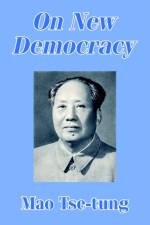- Volume I (Part Two -- Exorcism - Knowledge)
421
The purpose of this dictionary is to give an account of everything that relates to Christ - His Person, Life, Work, and Teaching. It is in a sense complementary to the Dictionary of the Bible, in which, of course, Christ has a great place. But a dictionary of the Bible, being occupied mainly with things biographical, historical, geographical, or antiquarian, does not give attention to the things of Christ sufficient for the needs of the preacher, to whom Christ is everything. This is, first of all, a preacher's dictionary. The authors of the articles have been carefully chosen from among those scholars who are, or have been, themselves preachers. And even when the articles have the same titles as articles in the Dictionary of the Bible, they are written by new men, and from a new standpoint. It is thus a work which is quite distinct from, and altogether independent of, the Dictionary of the Bible. It is called a Dictionary of Christ and the Gospels, because it includes everything that the Gospels contain, whether directly related to Christ or not. Its range, however, is far greater than that of the Gospels. It seeks to cover all that relates to Christ throughout the Bible and in the life and literature of the world. There will be articles on the Patristic estimate of Jesus, the Medieval estimate, the Reformation and Modern estimates. There will be articles on Christ in the Jewish writings and in the Muslim literature. Much attention has been given to modern thought, whether Christian or anti-Christian. Every aspect of modern life, in so far as it touches or is touched by Christ, is described under its proper title. James Hastings (1852-1922) was a distinguished scholar and pastor. He was founder and editor of the Expository Times and is also well known for editing the five-volume Dictionary of the Bible, as well as the Encyclopaedia of Religion and Ethics, the Dictionary of Christ and the Gospels, and the Dictionary of the Apostolic Church.






























